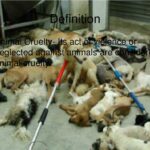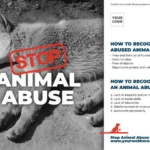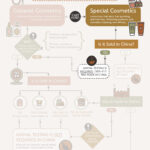The modern food system has engendered numerous debates, particularly when it pertains to the ethical implications of factory farming. At the core of this discourse lies a pressing question: Can factory farms truly be animal cruelty-free? To dissect this complex issue, it is indispensable to delve into the ethics surrounding animal husbandry, the operational practices of factory farms, and the nuances of consumer perception.
Factory farming—characterized by high-density livestock production, mechanization, and a focus on efficiency—has been a contentious aspect of agricultural practices for decades. The sight of rows upon rows of animals, confined to minimal space with little regard for their natural behaviors, conjures visceral reactions. The juxtaposition of this industrial landscape against the backdrop of ethical consumption is striking and cannot be overlooked. This paradigm has set the stage for a deeper investigation into the veracity of claims made by these farming operations regarding humane treatment.
Advocates of factory farming often purport that they incorporate measures to ensure the wellbeing of animals, asserting that advancements in veterinary science and animal husbandry practices have revolutionized the industry. They argue that these improvements alleviate much of the suffering previously associated with animal agriculture. Yet, the skepticism surrounding these claims raise an important inquiry: do these improvements suffice, or do they merely mask systemic issues permeating the industry?
To approach this question, one must first consider the conditions under which animals are raised in factory farms. Common practices include confinement in cages or pens, lack of outdoor access, and routine use of antibiotics. Such conditions not only stifle the natural instincts of these creatures but also create an environment rife with stress and suboptimal health. For instance, broiler chickens, bred for rapid growth, can become so corpulent that they struggle to ambulate. Pigs, unable to engage in natural social behaviors, exhibit signs of frustration and despair as they are packed into overcrowded settings.
The reality is strikingly at odds with the idyllic imagery often portrayed in advertising campaigns. The dissociation between perception and reality engenders a cognitive dissonance for consumers caught between the desire for ethically produced food and the convenience and affordability that factory farms provide. It is this internal conflict that propels many individuals to grapple with the ethical ramifications of their food choices.
Moreover, the discussion on animal welfare must extend beyond the notion of cruelty alone. It invites deeper philosophical considerations regarding anthropocentrism and the inherent rights of sentient beings. The moral implications of commodifying sentient life for human consumption demand rigorous examination. Just because a system can produce food does not provide a carte blanche to disregard the wellbeing of animals. As society evolves, so too should our understanding of our moral obligations toward other living entities.
Factory farms often tout welfare certifications as proof of their commitment to humane treatment. However, these certifications can vary significantly, and varying standards lead to confusion for consumers. The existence of ambiguous labeling practices results in a marketplace where the claims made by producers may far exceed the veracity of the practices employed. Consequently, consumers can find themselves inadvertently supporting systems that perpetuate suffering, underscoring the urgent need for transparency and accountability within the agricultural sector.
As ethical considerations mount, an increasing number of consumers are gravitating toward labeling practices that explicitly denote humane treatment. Grassroots movements and organizations dedicated to animal welfare advocate for reformative measures, stressing a shift towards pasture-based and regenerative farming practices. By embracing ethical sourcing, they posit that both consumer health and animal welfare can be safeguarded. However, transitioning from an industrial mindset to one that prioritizes these comprehensive values remains a formidable challenge.
Moreover, the economic implications of such shifts must not be overlooked. A significant portion of society remains entwined in cycles of poverty, often relying on inexpensive food sources to survive. In an environment where animal welfare can take a backseat to affordability, the competition is fierce, and the stakes are high. This crystallizes the dilemma: how can society reconcile the mutually exclusive needs of accessible food production and humane treatment of animals?
Furthermore, environmental sustainability is inexorably linked to the conversation concerning factory farming and animal cruelty. Intensive farming practices have far-reaching repercussions, from ecological degradation to climate change. The ethical ramifications of food production extend well beyond animal welfare; they encompass the broader impact on the planet, which further complicates the discourse. A multifaceted approach that integrates environmental ethics and animal rights might pave the way for a more equitable and sustainable food system.
Ultimately, the aspiration for cruelty-free factory farming remains a contentious and often unattainable ideal within the current industrial framework. The complex interplay between consumer expectations, ethical standards, and economic realities challenges the notion of a fully cruelty-free system in such an environment. Although strides toward improvement are commendable, one must grapple with the notion that complete alleviation of cruelty may be impractical under the constraints of factory farming.
As the dialogue around food choices continues to evolve, it is imperative that consumers remain vigilant, informed, and empathetic. Each decision at the grocery store is imbued with ethical implications, and a collective shift toward more humane practices will necessitate concerted efforts from consumers, corporations, and policymakers alike. Through awareness and advocacy, it is feasible to cultivate a food system that respects both animal life and the planet we inhabit—one where the ideal of cruelty-free food emerges from the shadows of industrial farming’s stark reality.








